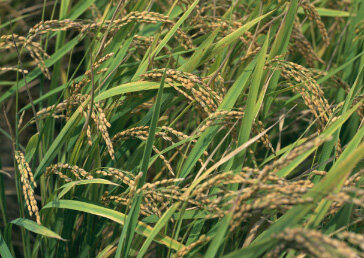R&D
Contributing to stable food production and labor-saving agricultural work through research and development of agricultural chemicals utilizing fluoridation technology
-
Article categories:
- Foods
-
Related businesses:
- Applied Chemicals
- Social issue
- With population growth, the issues of increasing production to ensure sufficient food
- Central Glass's engagement
- Research and development into agrochemicals that contribute to increased food production and improved storage
Humans have experienced many periods of famine throughout their long history. More recently, there was acute famine after the Second World War. In Japan, agrochemicals and fertilizers played a significant role in overcoming food shortages after the war. Today, agrochemicals make a vital contribution to stabilizing food supplies and laborsaving in the agricultural sector. In this section we talk about Central Glass R&D efforts in agrochemicals and how we leverage our long-established expertise in fluorination technology.
Background to Development
The starting point for Central Glass's agrochemical technology is chlorination and fluorination technology used to obtain the fluorocarbon products that were our Company's first organic fluorine products. Our customers saw these products and began asking for new compounds. Our R&D activities got started when we began looking for ways to resolve the issues they presented us with.
In new R&D projects, what is important is to find out early on what our customers' needs are in order to resolve their issues quickly. At first, we first got projects in Japan from our domestic customers. After that, by acquiring operations overseas we became able to closely and quickly assess the needs of the world's leading pharmaceutical and agrochemical manufacturers in Europe and the US.

Approach to Development
A recent example is the way we deployed technology that had initially been developed for pharmaceutical intermediates to commercialize agrochemical intermediates.
We started by studying the production of intermediates for high blood pressure drugs, but we were unable to get the intended product. However, it turned out that another compound was obtained in high yield with high selectivity. Although we failed to obtain intended product, this became the starting point for the discovery of some new reactions. By using these reactions with a variety of raw materials and under different conditions, our researchers successfully developed some new asymmetric fluorination technologies. We were using these technologies in large-scale pilot production of a number of intermediates for high value-added chemicals such as anti-cancer agents, HIV drugs, diabetes drugs, and others both in Japan and overseas.
However, R&D works for many compounds are discontinued during the clinical development stage. We came to the sobering realization that the flip side of drug development is that it is quite risky. At the same time as our drug development project, a major overseas corporation showed interest in agrochemical intermediates using Central Glass technology, but it would have been difficult for us to meet cost targets with production in Japan, and priority of the project was downgraded. Pharmaceutical projects would be discontinued during the clinical trials, however, our technologies for these projects would be still alive. When the pharmaceutical projects were discontinued, we switched to another project, agrochemical intermediate, which had been lower priority because of significantly lower cost requirement than pharmaceutical. As a result of the researchers' efforts, in addition to technological improvements in reaction conditions, waste disposal, etc., the project was advanced from domestic production to building of a plant in China, where it is cheaper and more feasible to do business, leading to commercial production.

Keys to Success
Launching the Construction of a Chinese Plant
The advantage of the Chinese plant may be cost, but there were many other serious obstacles that needed to be overcome in building it, including the difficulty of communicating in Chinese and our lack of knowledge and know-how with the complicated Chinese regulations.
In addition to the R&D center and the plant technical people, it was very important to have the cooperation of Central Glass expats in China and our Chinese partner company to launch the construction of our Chinese plant. The project took a lot of knowledge, sweat, and tears from all concerned to bring it to completion. The plant, which is Central Glass's first chemical segment plant in China, was built and got up running in 2010.
Fluorine Technology Knowhow That Comes From Many Years of Experience
The synthesis of fluorine compounds calls for a thorough understanding of how to use some extremely hazardous raw materials, including hydrogen fluoride. Not many companies in the world could handle hydrogen fluoride on commercial basis. Central Glass has fluorine technology knowhow that comes from many years of experience. We comply with world standard environmental safety regulations for reactions, products, and waste management. One of Central Glass's greatest strengths lies in the fact that our operations are run with a view not only to the safety and peace of mind of our employees, but that of our surrounding communities as well.
By using technology obtained from R&D in the fields of pharmaceuticals and agrochemicals, Central Glass has identified interesting reactions that may find useful applications in semiconductors and battery materials beyond the agrochemical and pharmaceutical domain. This accumulation of new discoveries is an important element of the Central Glass process of cutting-edge technical innovation.
